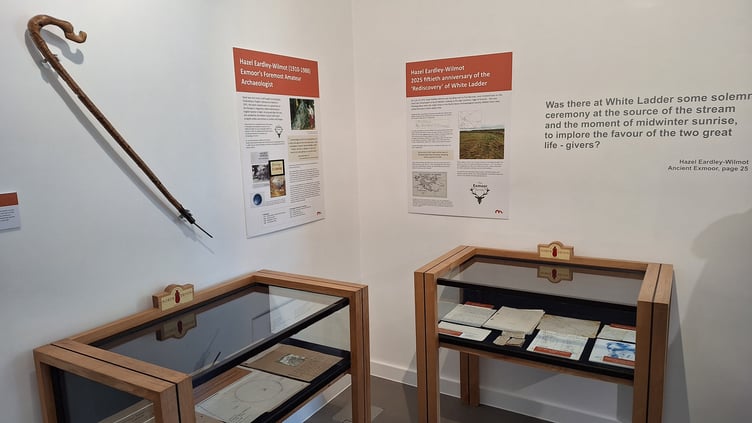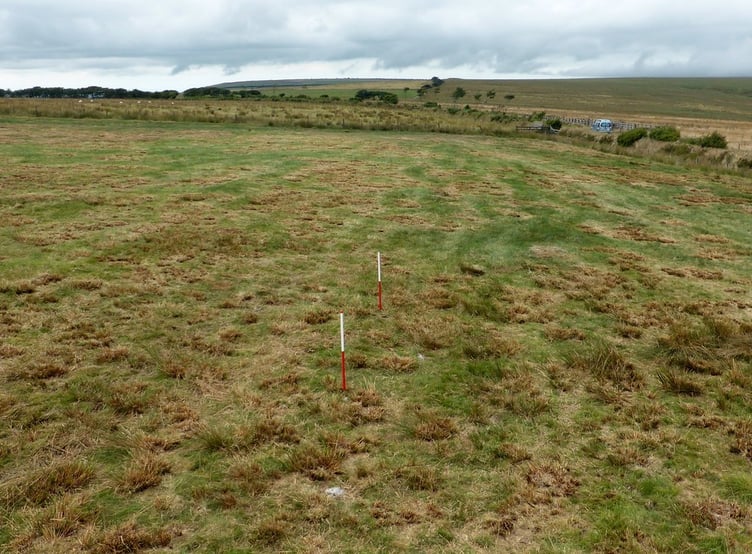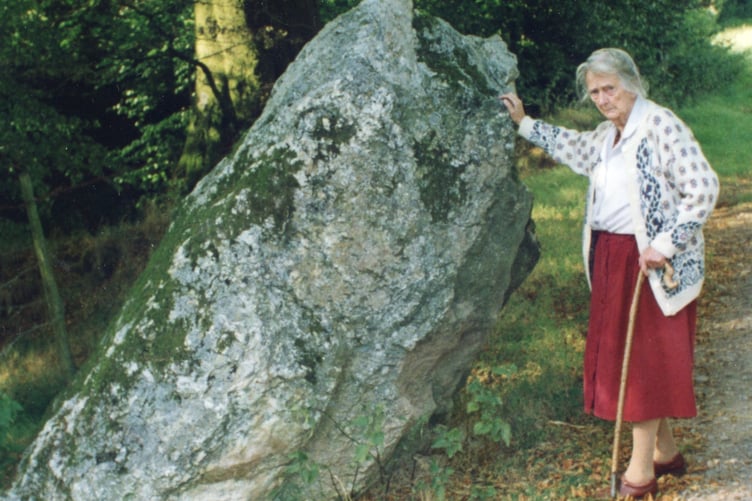THE Exmoor Society is celebrating the 50th anniversary of the remarkable ‘rediscovery’ of a Bronze Age double stone row monument, found below Five Barrows on the southern ridge of Exmoor by renowned amateur archaeologist Hazel Eardley Wilmot.
A series of special events will mark the occasion, including a guided walk at the site and an exhibition in the Museum of Barnstaple and North Devon which runs until October 4.
Hazel Eardley-Wilmot discovered the quarter-mile-long double stone row, made up partly of quartz stones, in 1975 and surveyed the site alongside volunteers from the North Devon Archaeological Society (NDAS) and the Exmoor Society.
In all, 164 stones were identified, making it the longest double-row stone monument of small and medium stones in Great Britain.
A guided walk around the White Ladder site will be led by volunteers Graeme Horn and James Radley on Saturday (August 23).
Alongside a visit to the White Ladder, visitors will also be able to explore neighbouring Five Barrows, and other local features discovered by Hazel, including two crossed rows, a possible ellipse, and about 30 small mounds.

Bookings can be made via the Exmoor Society website.
Over the summer, the Exmoor Society archive will also join a fascinating new exhibition at the Museum of Barnstaple and North Devon, celebrating the vital role of volunteers in archaeology.
Organised by NDAS, the exhibition features a rich collection of images, maps, documents, and photographs from the Exmoor Society archive, showcasing the groundbreaking archaeological work of Hazel Eardley-Wilmot on Exmoor.
Hazel Eardley Wilmot, an Oxford English graduate, teacher, and educationalist, retired to North Molton in 1969.
She spent 30 years studying the prehistoric monuments of Exmoor and published a microstudy, ‘Ancient Exmoor’ and a history, ‘Yesterday’s Exmoor’.
The society’s archive has loaned Hazel’s walking stick, fitted with a four-inch spike, which she used for prodding along the lines of White Ladder to find stones buried under the turf.

On display are her handwritten ‘dig’ diary and her small hand-drawn pocket-sized diagram of the 164 stones found.
There will also be a display from the Exmoor Society archive on an emergency rescue archaeological dig led by Hazel over Jubilee Weekend in 1977 to examine Kinsford Gate Barrow before ploughing took place.
NDAS will also showcase its work uncovering a 10,000-year-old flint tool making site, the excavation of an 18th century clay pipe workshop, and of the spectacular Clovelly Dykes Iron Age defended site.
The exhibition ‘Digging Deeper’ is free.
Exmoor Society volunteer Graeme Horn will give a presentation on Hazel Eardley-Wilmot and the White Ladder during the exhibition in September.





Comments
This article has no comments yet. Be the first to leave a comment.